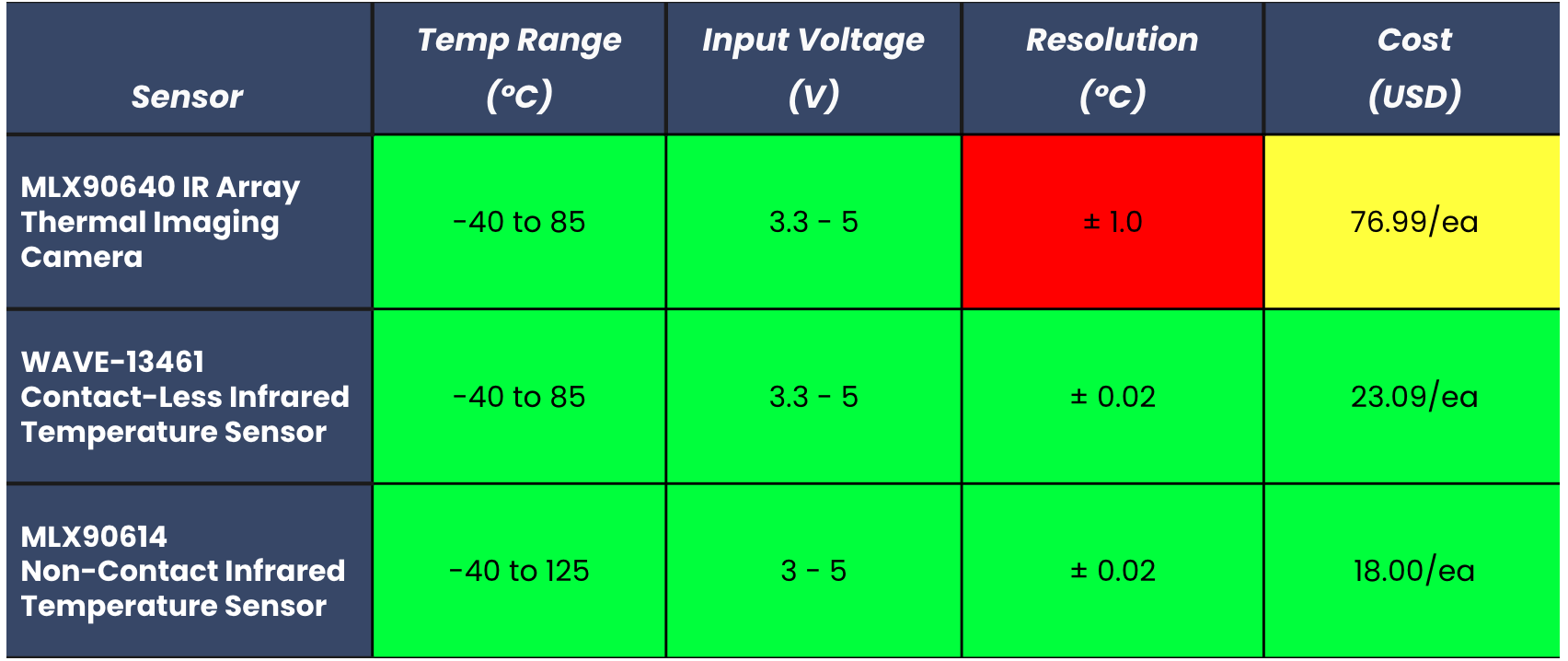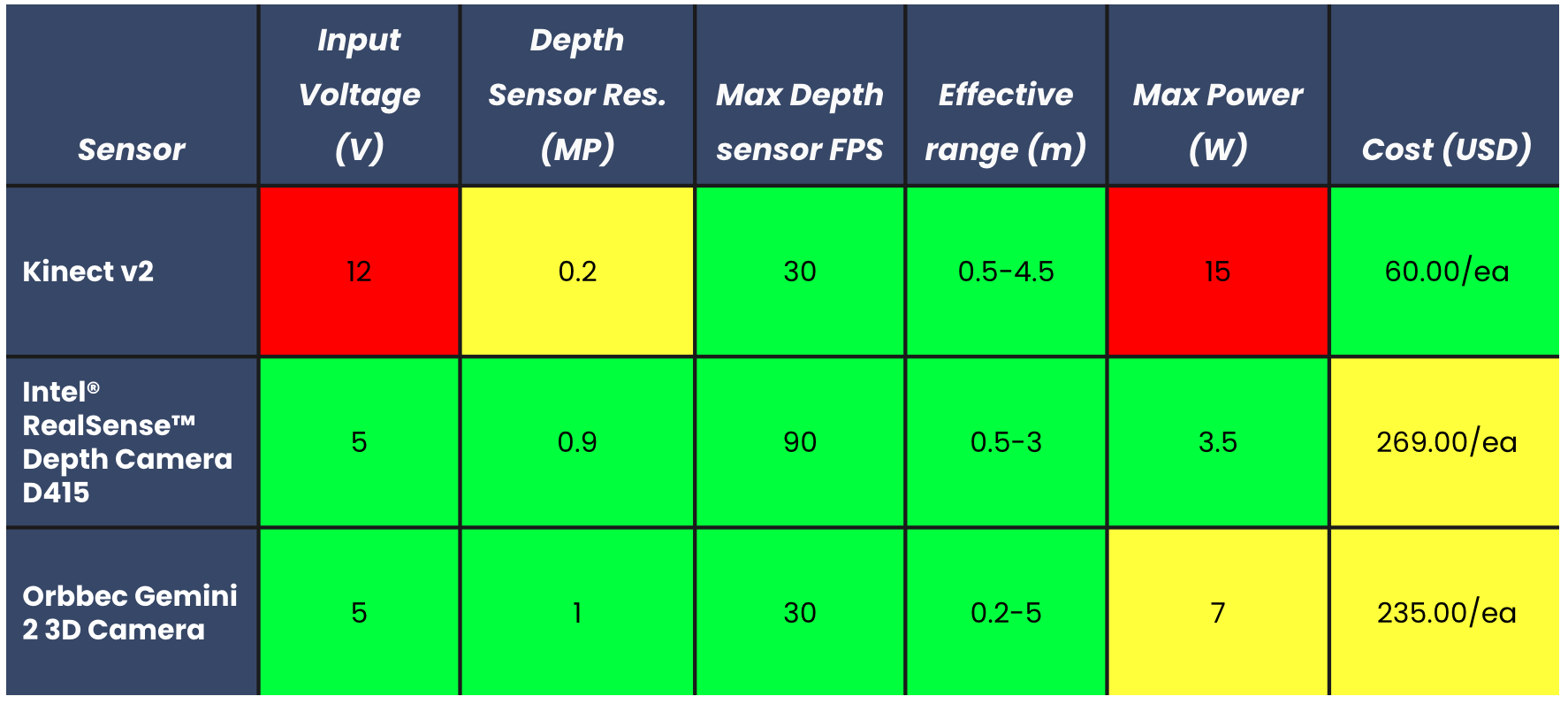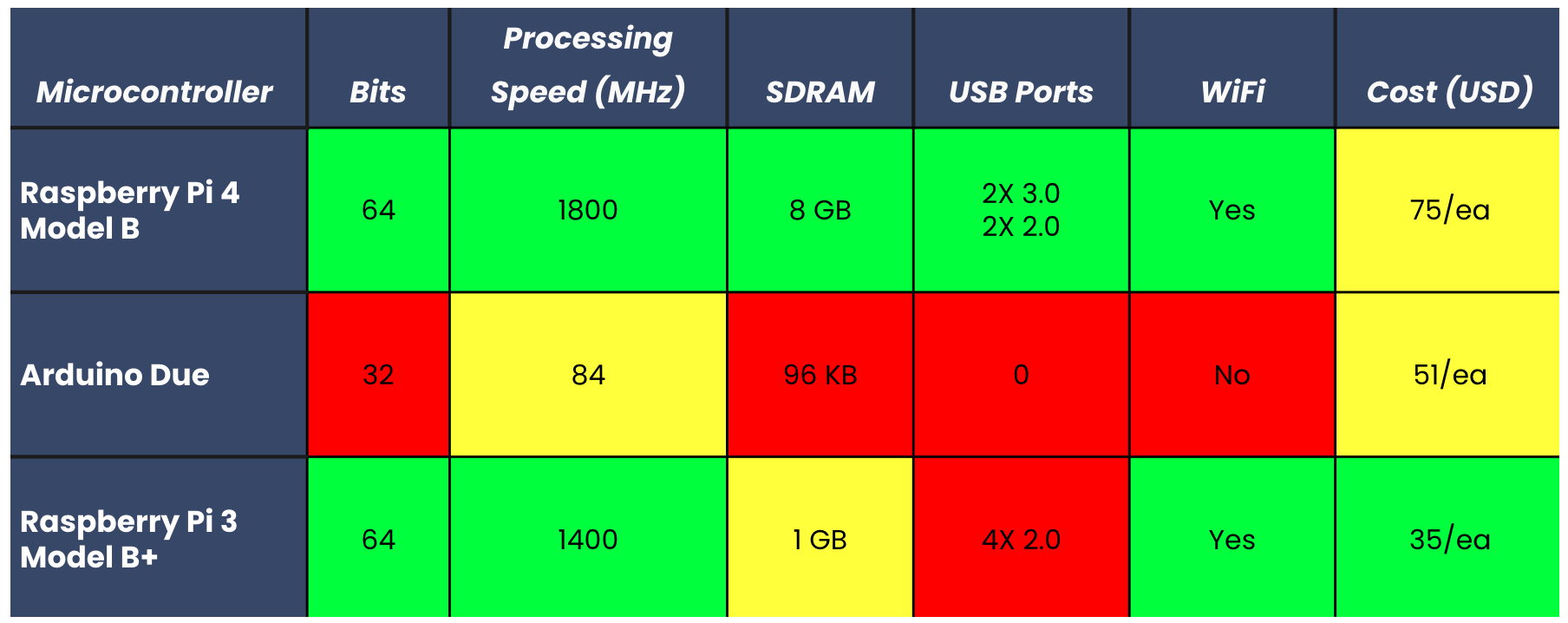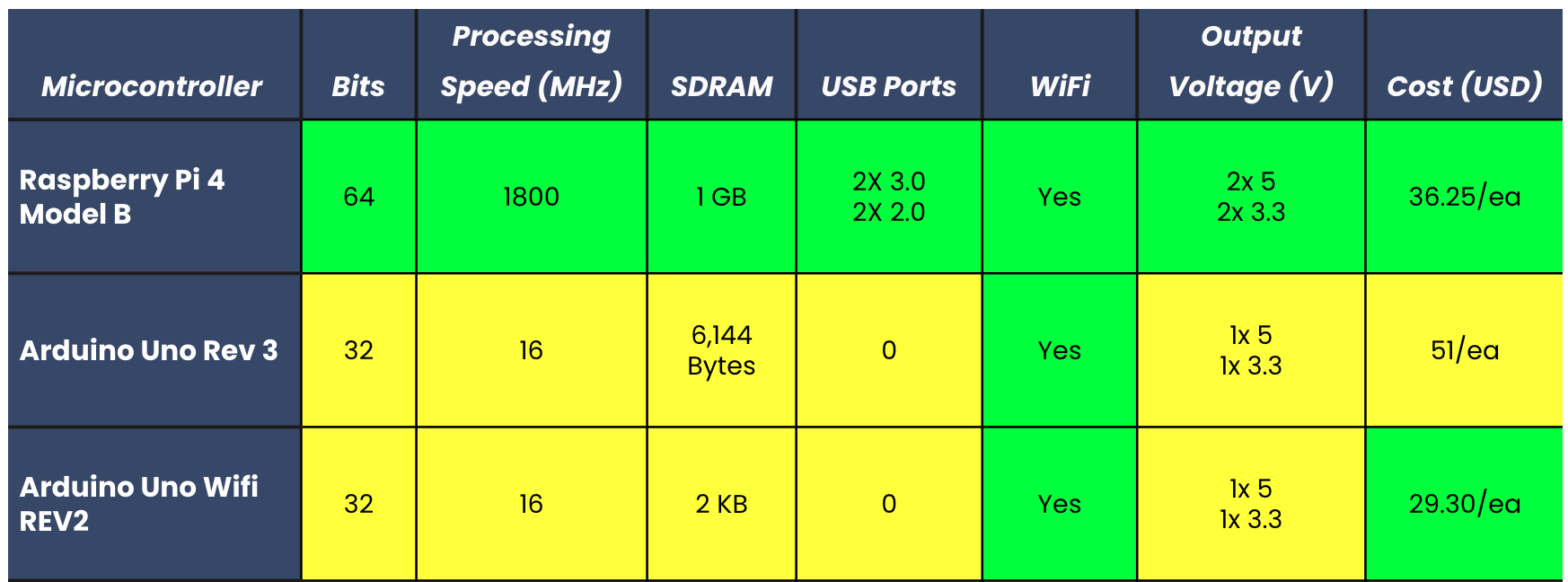Baby Monitoring Device
Crib-mounted Device Design
- Adjustable height
- Can attach to the crib railing at multiple points
- Includes temperature sensor, depth sensor, microcontroller, and microphone


Freestanding Design
- Adjustable height
- Position can be freely adjusted
- Includes temperature sensor, depth sensor, microcontroller, and microphone
Parent Monitoring Device
Parent Device
- LEDs to indicate vital status
- LCD screen to display vital measurement values
- Speaker for when high-alarm reached

Part Selection
Decision Matrices:
Temperature Sensor

Microphone

HR, RR, Body position sensor

Microcontroller 1

Microcontroller 2

Hazard Analysis
| Severity Levels | |
| Term / Score | Definition |
| Critical (4) | Results in permanent injury |
| Serious (3) | Results in injury that requires medical attention |
| Minor (2) | Results in injury that does not require medical attention |
| Negligible (1) | Results in mild inconvenience or discomfort |
| Occurrence Levels | |
| Term / Score | Definition |
| Probable (4) | Likely to happen |
| Occasional (3) | Could happen, not likely |
| Remote (2) | Unlikely to happen |
| Improbable (1) | Very unlikely to happen |
| Severity Levels | |||||
| Negligible | Minor | Serious | Critical | ||
| Occurrence Levels | Probable | R2 | R3 | R3 | R3 |
| Occasional | R2 | R2 | R3 | R3 | |
| Remote | R1 | R2 | R2 | R3 | |
| Improbable | R1 | R1 | R2 | R2 | |
RPN ≤ 2: Acceptable Risk (R1)
3 ≤ RPN ≤ 6: As Low As Reasonably Possible (R2)
RPN ≥ 7: Unacceptable (R3)
| Hazard | Severity Level | Severity Justification | Occurrence Level | Occurrence Justification | RPN |
| Monitor falls on baby | Serious (3) | Since the sensors will be positioned directly above the baby, if the sensors fall, it would likely hit the baby and could result in an injury that requires medical attention. This could change depending on the weight of the sensors. | Improbable (1) | Depending on what the sensor stand is attached to (whether it’s the ground near the crib or on the side of the crib itself), the stand will be designed to effectively hold the weight of the sensors to limit the potential of them falling on the baby. | R2 |
| Delayed or incorrect treatment from device measurement error | Serious (3) | Measurement errors may display the incorrect alarm. If the incorrect alarm is displayed, caregivers cannot provide proper treatment. This causes serious medical injuries. | Remote (2) | The chances of measurement errors are unlikely to happen because multiple tests and trials will be performed during manufacturing to ensure high accuracy. | R2 |
| Delayed or incorrect treatment due to user ignorance | Serious (3) | If the parent ignores the data exported, as a result of sleep deprivation and thus delay taking their children in for care. If the child is not given the proper medical care, the child could require immediate medical attention. | Remote (2) | While ignorance of the data is possible, the device has many built-in precautions to prevent that. These precautions are implemented to wake the parent to provide care to their child. Alarms and LED lights will be turned on to alert the user that something is wrong to prevent misinterpretation. | R2 |
| Overly trusting of the device, failing to regularly check on baby | Minor (2) | If the baby’s vitals are out of the normal range, the baby may become sick if he/she is not cared for. | Occasional (3) | The parent may be too tired to check on the baby monitor every so often, resulting in the baby needing their attention. | R2 |
| Loss of power or electricity | Minor(2) | Loss of power means that the device will be rendered unusable, so if there’s something wrong with the baby’s vitals then the parent will not be notified. | Improbable (1) | Assuming that the power supply is plugged in properly, there should be very little chance of this occurring. Blackouts may rarely occur, but power should be restored soon after. | R1 |